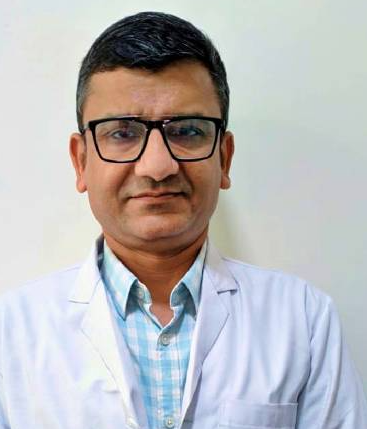Is Hair Transplant Safe? - Risks, Safety and Complications

Quick Summary
Hair transplant risks include:
- Infection
- Scarring
- Uneven hair growth
- Hair loss in other areas of the scalp
It is important to weigh the risks and benefits of hair transplant surgery before making a decision.
Losing hair is one of the signs of ageing, and people are looking at ways to prevent or reverse the process. Many people prepare to undergo surgeries without knowing the hair transplant risks.
Understanding Hair Transplant Procedure
Before we analyse whether a hair transplant is safe or not, it is essential to know how doctors perform the surgery. It is a common procedure performed in millions of clinics across the globe. The surgery involves removing hair from the back of the head or other body parts and planting them in the affected areas. The procedure may be done under general or local anaesthesia, depending on the type of surgery chosen. In most cases, there are hardly any complications, and the patient can soon go home. There are two methods of hair transplant commonly practised today.
- FUT (Follicular Unit Transplantation): In this method, a long strip of the scalp which has hair from the back of the head is removed. The wound is immediately closed and stitched. The follicles for graft are removed from this and transplanted to the recipient area.
- FUE (Follicular Unit Extraction): The surgeon uses a punch to remove hair and follicles from the donor area and then plants them in the affected area. It is a much easier method, and hair transplant complications are much less.
Both FUE or FUT is performed by either plastic surgeons or dermatologists. One must find experienced doctors to ensure a safer hair transplant. It is important to know how the surgery is performed as there are many dangers associated with it.


Understanding Hair Transplant Risks
A hair transplant is generally a safe surgery with very few complications. However, there are incidents when people have suffered adverse reactions. This is why it is essential to know whether a hair transplant is safe or not. There are general complications common to both methods of hair transplant. Some risks are unique to each type.
General Complications
- Reaction To Anaesthesia: As the procedures are mostly done under local anaesthesia, there are very few chances for any adverse reaction. There can be allergic reactions. However, doctors always do a precautionary sensitivity test before administering the medicine.
- Faster Heart Rate: Tachycardia, or the condition of having more than a hundred heartbeats per minute, can occur in a hair transplant surgery. It is usually a temporary phenomenon and happens due to tumescent fluid containing adrenaline which is given during the procedure. But this can be risky for patients with existing heart conditions and therefore heart rate and blood pressure are constantly monitored during the procedure.
- Fainting: Sudden fainting or syncope, as it is called in medical terms, is not very common after a hair transplant. However, this could occur due to pain, postural hypotension, sensitivity to Xylocaine, poor hydration, etc. Proper anaesthetic and analgesic preparation can help reduce these incidents. Doctors must also try to reduce the use of Xylocaine by completing the surgery quickly. Specialists must ensure good hydration and maintain electrolyte balance during the surgery.
- Pain: Pain during surgery is a common problem, but experts can easily tackle this with the use of analgesics. Cutting a wide strip during FUT, bleeding and wound tension may cause pain. Performing a long session without proper anaesthesia can also result in pain during the procedure. But as this pain is bearable, it need not make one wonder whether a hair transplant is safe or not. Administration of anaesthesia mixed with adrenaline can help relieve pain locally. Ice packs can be of great help to relieve pain when injecting anaesthetics.
- Infection: One of the other common hair transplant risks is infection. It can occur both in the donor and recipient areas. But the occurrence is not very serious. Infection can occur due to a high-tension closure at the donor site leading to circulatory compromise or excessive crust formation. Recipient area infections can be seen with papulo-pustules formed in the affected area. Fluctuance, erythema and tenderness have been observed in some cases along the incision lines suggesting the formation of an abscess. There have been cases of septicemia after hair transplants.
Complications of FUT
- Wound Dehiscence: The term means the opening of a wound and it occurs as a result of improper wound healing due to high-tension closure, infection, early removal of sutures or indulging in rigorous physical activity immediately after surgery. It can be seen in diabetic patients.
- Necrosis: Necrosis also known as death of tissue is possible when there is a loss of blood flow to the tissue in the wound margin. Excessive tension caused by an error in closing the wound can result in loss of blood flow to the area. It causes the death of the tissue. This is a serious complication because it will result in permanent damage to the follicles in the area. It is one of the hair transplant risks that is prevented by avoiding excessive tension when closing wounds.
- Donor Hair Effluvium: This kind of hair loss can be seen on both sides of the incision. This is usually temporary, and hair growth will restart within three or four months. Oedema, inflammation and lack of blood supply can result in hair loss. There can be a serious loss of hair if there is a major reduction in blood supply to the area. Regular cleaning of the wound and application of topical antibiotics can prevent such occurrences.
- Scarring: It is another one of the hair transplant complications that is peculiar to the FUT method. Scars can occur due to various reasons. The wrong surgical technique can cause scars. The non-compliance of patients in observing restrictions to flexing of the neck can also result in scars. These scars are seen in the donor area. Visible scarring is the most common complication of FUT.
- Hematoma: Hematoma or clotted blood pool happens when the donor area incisions are deep, and an artery is cut. Hematoma in the donor area can result in swelling, pain and bruising to the tissues if not treated immediately. Limiting the depth of incision in the area can result in a safer hair transplant without any issues. Wound exploration and cauterisation of the damaged blood vessels help stop the problem.
Risks Associated With FUE Hair Transplant
- Donor Site Depletion: It is a condition where the specialist removes more hair from certain areas giving the head a patchy appearance. It is one of the common hair transplant complications seen in the FUE method due to aggressive and non-uniform removal of follicles. It is here that the experience of the surgeon counts a lot.
- Pinpoint Scarring: Although many believe that the FUE method doesn't leave any scars, there can be small pinpoint scars at the places where the punch has been used to remove follicles. These scars are not as visible as the scarring that occurs in the FUT process. However, it is best for those undergoing hair transplants to know that these are seen if the hair is cut very short. They are more visible in darker skin types like that prevalent in India.
- Buried Grafts: The graft can be pushed into the dermis when the punch is blunt or is not properly aligned with the hair follicles. This results in buried grafts. It is one of the hair transplant risks associated with the FUE method.
The above list is not exhaustive, but these are the more common complications that can make a patient wonder whether a hair transplant is safe or not.
Summing Up
Those who are worried, "is hair transplant safe and permanent" can rest assured that dangers with this procedure are rare and can be easily tackled. This article is not meant to frighten anyone from undergoing a hair transplant. It only aims to answer many questions like, "is hair transplant safe for diabetics". The best way to minimise the risk of such problems is to find a surgeon who is experienced in the surgery. To identify a good doctor for this purpose, you may visit the HexaHealth website. We don't just find you a good specialist but also help you complete the admission and insurance formalities.
Frequently Asked Questions
Is there any risk in hair transplant?
Multiple risks like bleeding, pain, scarring, infection, opening of wound, etc. have occurred in rare cases. However, by and large, the process is safe.
What are the disadvantages of hair transplants?
Some of the main disadvantages of a hair transplant include a long recovery period and the results of the transplant depends on the quality of hair follicles in the donor area.
Is hair transplant permanent and safe?
Yes. A hair transplant is permanent. Those wondering how safe hair transplant is can rest assured that there are hardly any possibilities of serious problems with the procedure when done by an experienced surgeon.
Is hair transplant 100% safe?
No medical procedure is 100% safe, and a hair transplant is no different. But comparatively, hair transplant risks are very few.
What age is good for a hair transplant?
Although one can have a hair transplant after eighteen, it is advisable to wait a few more years till the hair loss has progressed and a pattern has been set.
Do I need to shave for a hair transplant?
You don't have to shave the head before a transplant. Shaving the entire head makes the surgery easier, but it is not necessary.
How many hairs can you transplant?
The number depends on the condition of the patient. The donor area must be in good condition to harvest the maximum number of hairs. Around five to six thousand hairs can be transplanted.
How long after a hair transplant can I shower?
Patients can take a bath immediately after a hair transplant but must keep the scalp dry. It is safe to gently wash the transplanted area after 48 hours without allowing the water to hit it directly. You can wash the hair directly under the shower after one week.
Is one hair transplant enough?
Generally, one hair transplant is enough to restore the hair. But if someone is getting a hair transplant in the early stages of baldness, repeated surgeries will be required to cover the areas that get bald as the person ages.
Does a hair transplant cause cancer?
There has not been any case where cancer is directly connected to a hair transplant. However, like any other part of the body, the scalp is also prone to cancer.
What are the risks of a hair transplant?
The risks of hair transplant include infection, pain, scarring, loss of hair, death of tissues, etc. However, these risks are not commonly seen, and a good surgeon will ensure these are prevented.
Are there any long-term side effects of hair transplant?
Numbness, thinning of hair and scarring are some of the long-term side effects of hair transplant that are seen in some patients.
Why should you not go for a hair transplant?
There are no reasons why anyone should not go for a hair transplant. However, they must take care to get the surgery done by a reputed and experienced doctor. Falling into the hands of quacks can lead to dangerous consequences.
Does a hair transplant hurt the brain?
The brain is a vital organ, and it is protected by many layers, including the skull. A hair transplant is a procedure that affects only a portion of the scalp. There is no way any instrument can reach and damage the brain.
Can you go bald after a hair transplant?
Balding occurs due to hormonal changes. The transplanted hair cannot get affected by these hormones. However, even after a transplant, one can continue losing hair (non-transplanted) resulting in patchy baldness.
Is a hair transplant worth it?
If you are a person suffering from baldness, a hair transplant is an excellent way to get back hair on your head. It is a permanent solution, and nothing affects the hair follicles. But like other hair follicles, they also have a life and can eventually stop producing as many hairs as it does now.
Does a hair transplant cause infertility?
Hair transplant surgery will not affect fertility in any way.
Does a hair transplant cause erectile dysfunction?
A hair transplant does not cause erectile dysfunction. There is no connection between the procedure and erection.
Last Updated on: 12 December 2023
Reviewer

Dr. Priyanka Sharma
MBBS, DNB Plastic Surgery, Training in Hand and Microvascular Surgery, Training in Hair Transplant
15 Years Experience
Dr Priyanka Sharma is a highly regarded Plastic, Reconstructive, and Aesthetic Surgeon with over 15 years of experience.
She is currently associated as a Consultant with:<...View More
Author
HexaHealth Care Team
HexaHealth Care Team brings you medical content covering many important conditions, procedures falling under different medical specialities. The content published is thoroughly reviewed by our panel of qualified doctors for its accuracy and relevance.
Expert Doctors (10)
NABH Accredited Hospitals (5)
Latest Health Articles
Related Treatments



























 Open In App
Open In App